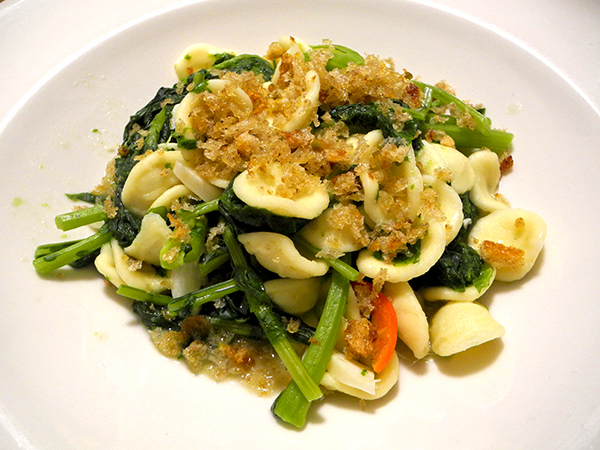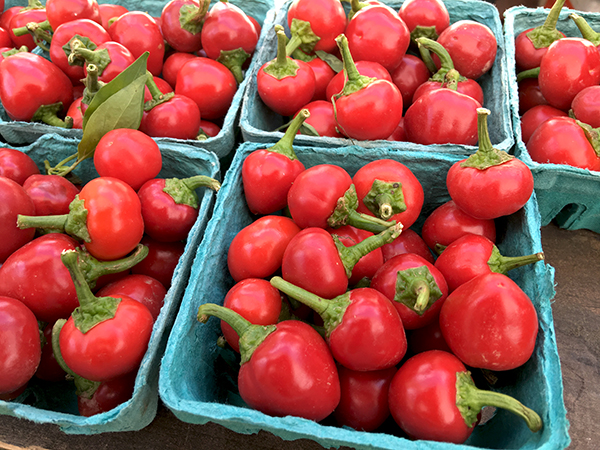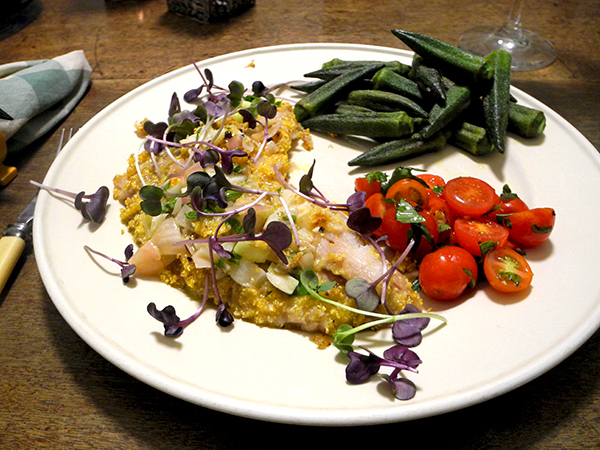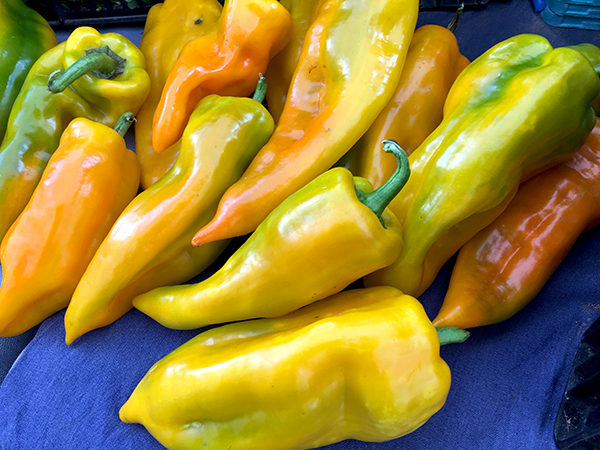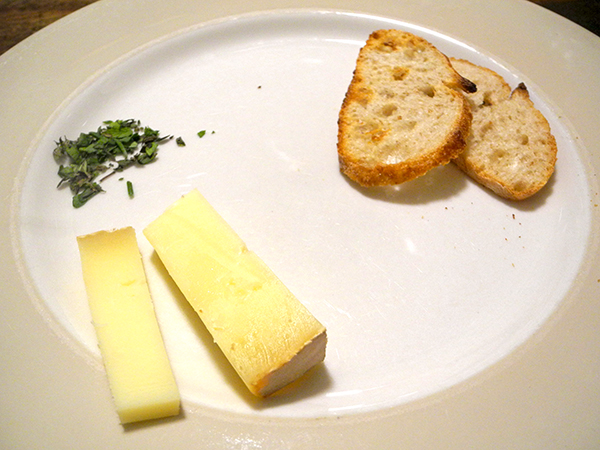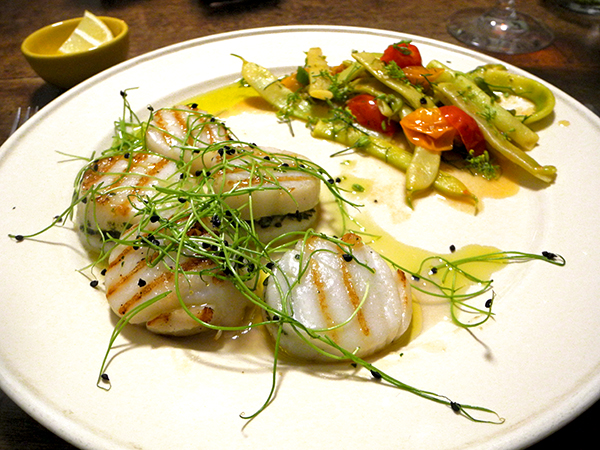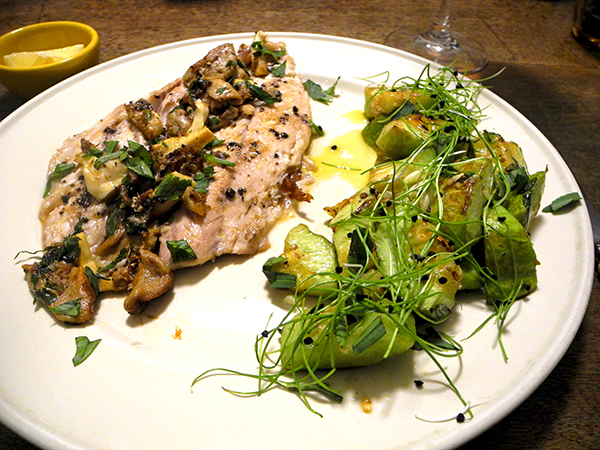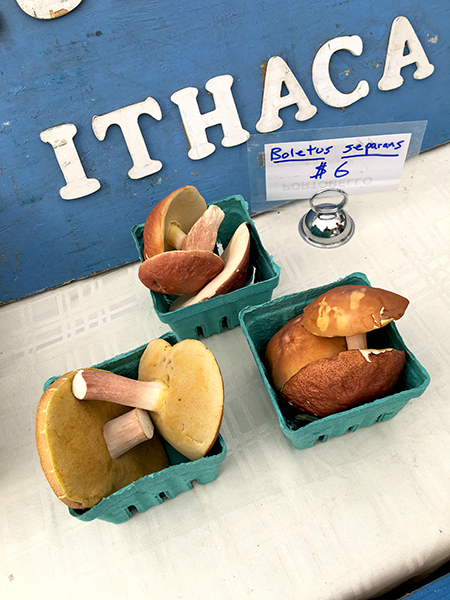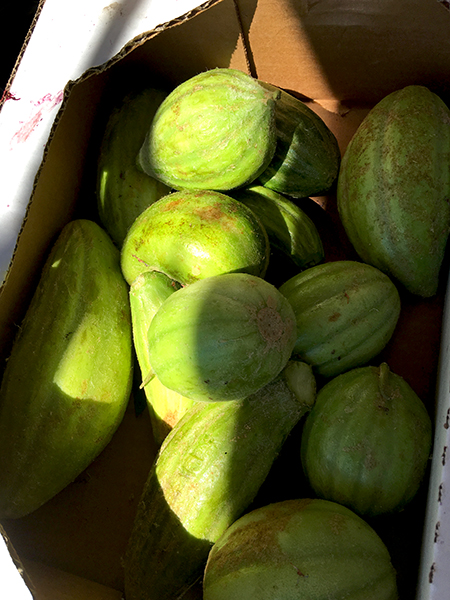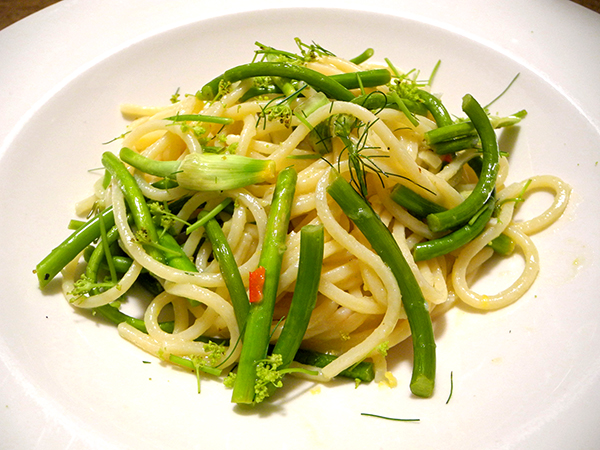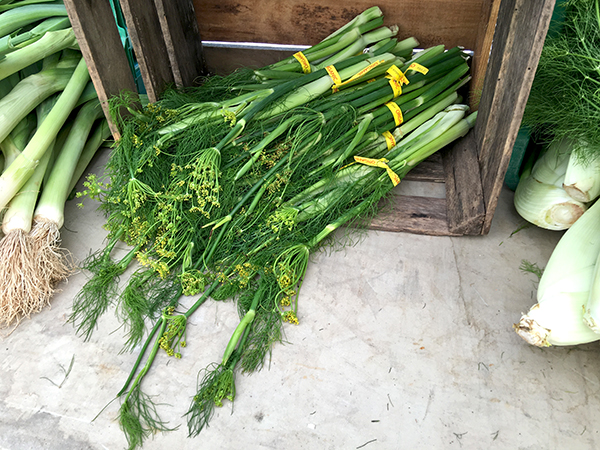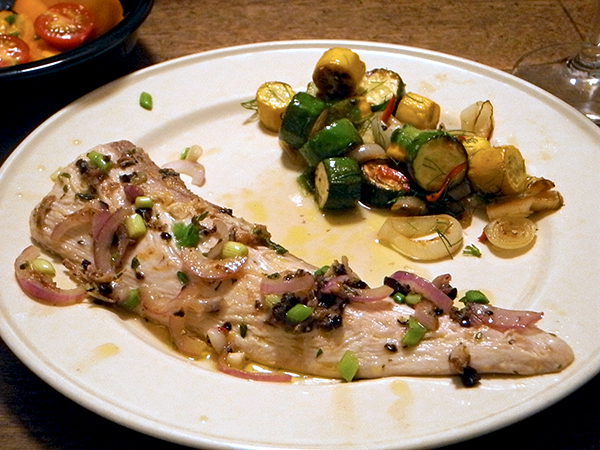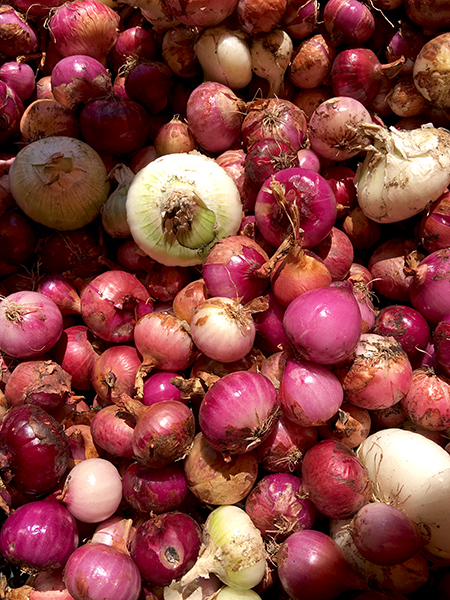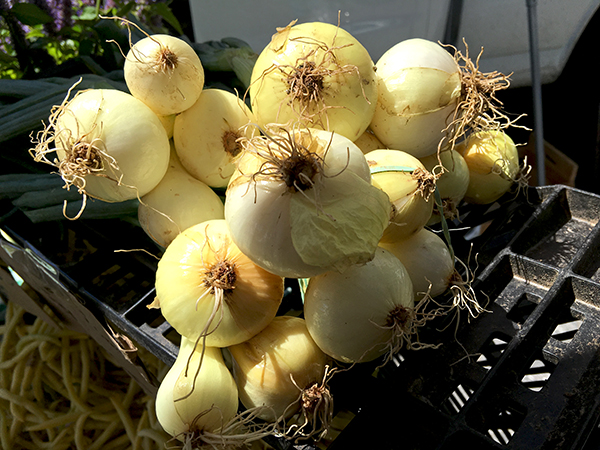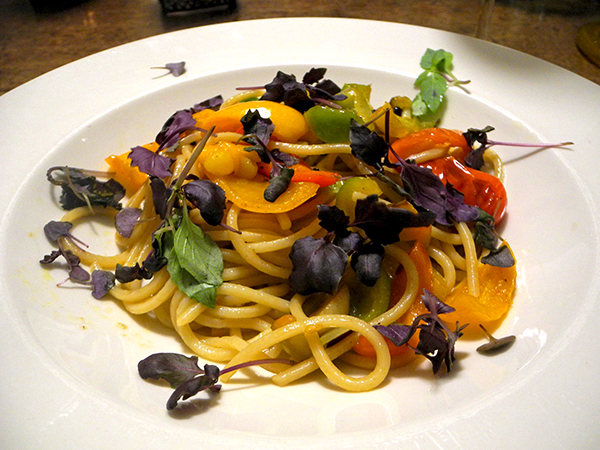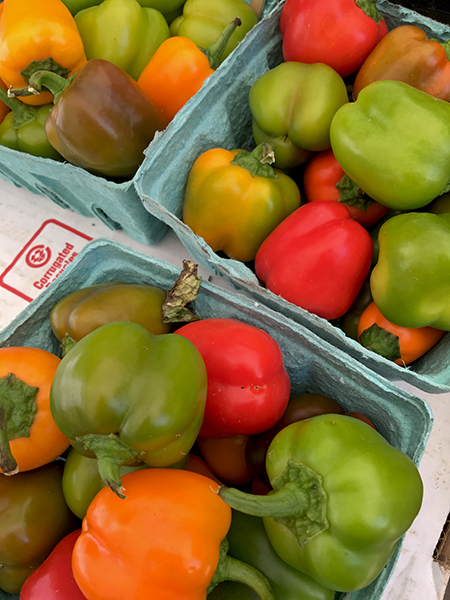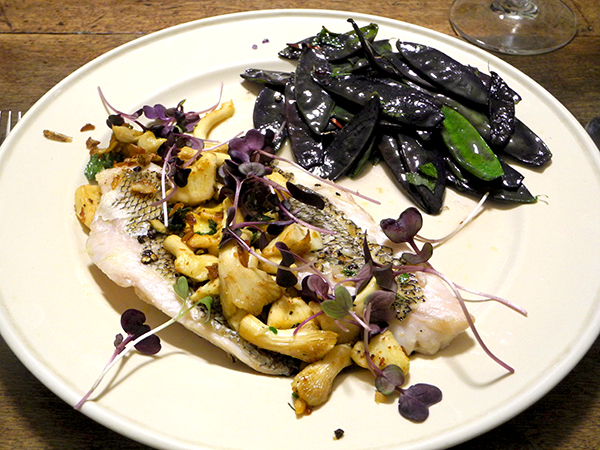
It was another round of fish with mushrooms, although it was different fish and different mushrooms (also different vegetable). It was, almost, the same simple, excellent recipe, and it was at least as delicious as the first time up.
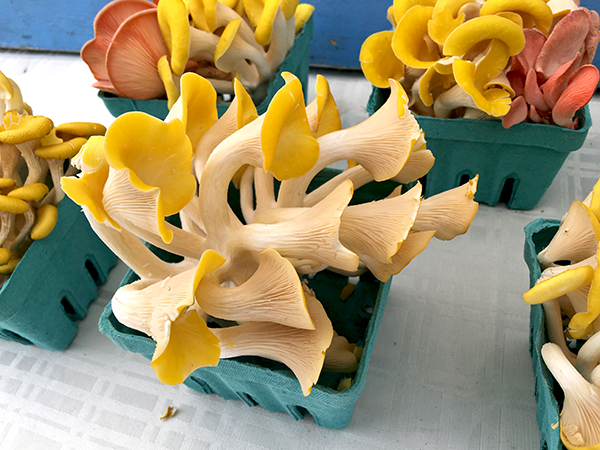
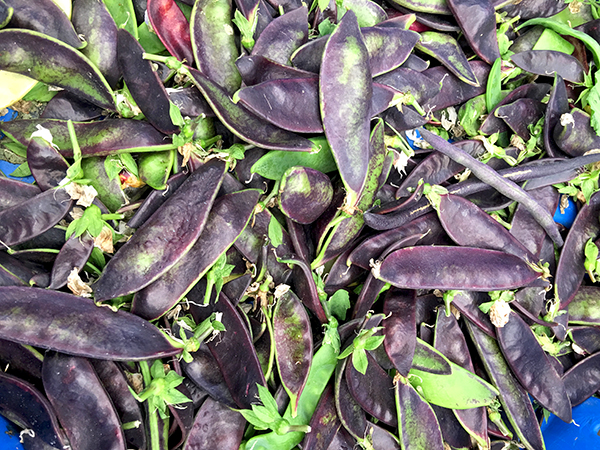
- four 3-ounce black sea bass fillets from Pura Vida Fisheries, seasoned on both sides with salt and pepper, sautéed over a fairly brisk flame with butter and a little olive oil inside a large, thick oval copper pan, skin side down, then turned after about 2-3 minutes and the other side cooked for about the same length of time, removed to 2 plates when done, covered at least a little to keep warm, a tablespoon or more butter added to the pan, and 4 ounces of mushrooms (golden oyster [pleurotus citrinopileatus], from Blue Oyster Cultivation, cut into large-ish pieces, sautéed, stirring, until lightly cooked, seasoned with salt, pepper, a couple tablespoons of chopped lovage and chopped parsley, both from Keith’s Farm, and a tablespoon of lemon juice, or a little more, the mushrooms stirred some more before they and the juices were spooned on top of the fish, which was finished with micro purple radish greens from Two Guys From Woodbridge
- purple snow peas from Norwich Meadows Farm, sautéed in olive oil along with a little more than one finely-diced small red Calabrian pepper from Campo Rosso Farm, tossed with spearmint from Stokes Farm, seasoned with salt and pepper
- the wine was a California (Central Coast, Santa Ynez Valley) white, Rick Boyer Central Coast White Blend 2015
- the music was that of Johann Christoph Friedrich Bach, the master’s fifth son, the ‘Bückeburg Bach’, and once again from the excellent 4-disc album, ‘The Sons of Bach‘
